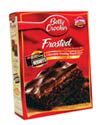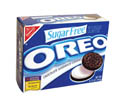
In 2005, Mintel's Global New Products Database (GNPD) recorded an increase of 28% in whole-grain baked goods, which was not at all surprising given the highly anticipated and publicized addition of whole grains to the new food pyramid (which was altered to recommend at least 3oz of whole-grain breads, cereals, crackers, rice or pasta every day). Interestingly enough, whole grains first appeared in cereal products and then moved very quickly into the baked goods category. Whole grains now appear in just about all products, ranging from pancakes, to crackers, to cookies, making it much simpler for consumers to reach the recommended daily serving. Some of the most significant whole-grain introductions included Kraft Foods' Nabisco Chips Ahoy! Whole Grain Chocolate Cookies, baked with 100% whole grain, and Sara Lee's Soft & Smooth Whole Grain White Bread, claimed to look and taste like regular white bread. Pepperidge Farm also launched a whole-grain version of its popular Goldfish Baked Snack Crackers brand.
Going hand-in-hand with whole grain was an increased presence of “heart health” claims on-pack. According to a recent study published in the American Journal of Clinical Nutrition, “Older adults who regularly eat whole grains like high-fiber cereals and cooked oatmeal may be less likely to develop a cluster of conditions that raise the risk of heart attack and stroke.” Prior to these findings, there was no definitive study linking whole grains and heart health (although the two were believed to be correlated).
General Mills recently launched Bisquick Heart Smart All-Purpose Baking Mix. It is low-fat, contains 0g trans fat, is naturally cholesterol-free and serves as a good source of calcium. The company claims the product, which is approved by the American Heart Association, is a "delicious way to be good to your heart.” Sara Lee introduced Heart Healthy Wheat Hot Dog Buns—said also to be a good source of calcium, free from trans fat, artificial color, and artificial flavors. Lastly, a whole-grain version of Kraft Foods' Wheat Thins was touted as a product that may help reduce the risk of heart disease, containing 0g trans fat, low saturated fat and no cholesterol.

Health and Wellness Trends Shift
Health and wellness trends in baked goods this past year were quite different than what was found in 2004, as there was less focus on the removal of “bad” ingredients than has been observed historically. For example, the GNPD reported significant decreases in products flagged as low in fat, low in cholesterol, low in sugar and low in carbs. In fact, only trans fat-free and low-calorie products experienced an increase between 2004 and 2005. Trans fat-free products were introduced by just about every baked goods manufacturer, from smaller companies like Dare Foods to global manufacturers like Kraft Foods.
Dare Foods reformulated its Breton Cracker Collection to feature 0g of trans fat, while Kraft Foods introduced a new range of Sugar Free Oreos, said to be free from sugar, cholesterol and trans fat. This was an interesting shift for the market, perhaps indicating that consumers want their cakes, breads and pastries to remain as indulgent treats. With that said, however, low-fat and low-sugar products were still recorded, just not as heavily as the previous year. In fact, General Mills launched a low-fat version of its Pillsbury Perfect Portions, containing 25% less fat than the original variety, along with new Pillsbury Sugar Free Cinnamon Rolls with Icing, sweetened with Splenda. The rolls contained 25% fewer calories than the company's regular cinnamon rolls.

Convenience Cuts Baking Time
Consumers often are keen on finding products that are quick and easy to prepare, essentially eliminating or reducing preparation, cooking and clean-up times. In essence, baking mixes do this naturally; however, a strong increase occurred in the number of products that tout quicker preparation (if any prep time at all) and cooking times. One of the most significant introductions from 2005 in the area of convenience was Sara Lee's Quick 'n Easy Ready-To-Bake Single Layer Cake, requiring no preparation at all. The prepared batter simply is squeezed into a non-stick pan and baked without the need for added ingredients. General Mills also released Warm Delights under its Betty Crocker brand, which required the addition of water and a few seconds in the microwave. For those who do not want to bother with an oven or microwave, Kraft Foods extended its No-Bake line of desserts to include a Cherry Cheesecake variety, said to be easily prepared in 15 minutes.
Other areas of convenience in baked goods included single-serve products, on-the-go packaging, and packaging that helped retain freshness. Sunshine Biscuits introduced Sunshine Right Bites Cheez-It 100 Calorie Baked Cheese Cracker Packs, while Pepperidge Farm introduced Whims Crispy Waves Bite Sized Cookies, packaged in a board tub that sat equally well in the kitchen cabinet or the car's cupholder. In regards to freshness, Kraft repackaged its Nabisco Chips Ahoy! Chewy Cookies in convenient Snack 'n Seal packaging featuring a re-sealable top remarkably similar to packaging used for wet wipes.

Co-branding
Co-branding, merging two major brands into one product, is becoming increasingly popular in the baked goods sector. In fact, the number of co-branded products between 2004 and 2005 increased 26%. Co-branding, particularly in baked goods, is a powerful concept. Take, for instance, General Mills' Betty Crocker Super Moist Butter Recipe Chocolate Cake Mix, featuring Hershey's Dutch cocoa: consumers who like both Betty Crocker (the host brand) and Hershey's (the branded ingredient) will know before preparation exactly how the finished product will taste. Another example is from J.M. Smucker with Pillsbury Ultimate Dessert Kit in a Cookies 'n Crème variety. The kit includes cake mix, filling and topping, and is made with real Oreo cookie bits.Also adding to the success of co-branded products was the number of Cinnabon-branded products introduced by Schwan's Bakery, including Cinnabon Apple Crumb Pie and Cinnabon Cinnamon Cake. Cinnabon also paired up with General Mills to launch Cinnabon Betty Crocker Cinnamon Apple Crisp. For Cinnabon, this was an opportunity to take a brand best known as a quick-service restaurant and ease the transition into consumer packaged goods.
Skewing Younger
Products positioned for children in the baked goods sector continued to be among the largest trends. Just as reported in 2004, these products tended to focus on three things: interactivity, promotional marketing, and health and wellness. In regards to interactivity, Color-A-Cookie launched Nick SpongeBob SquarePants Cookie Coloring Kit, a kit containing a sugar cookie and flavored markers for coloring, while General Mills introduced Pillsbury Dunkables French Toast Sticks with Fun Syrup Colors, packaged with four different, bright colors of syrup to dip the French toast sticks in. Promotional marketing was abundant in extensions of Kellogg's Pop-Tarts brand, with images of characters from Disney Pixar's Finding Nemo, as well as a Disney princess on pack. Also promoting Disney was Kid Size Disney Tortillas under Gruma's Mission brand. These were tortillas packaged with edible Disney character decals.Of course, health and wellness played a large part in products for children this past year, with the inclusion of whole grains and vitamin/mineral fortification. Fireside Baking released Disney Mickey M's Graham Snack Cookies in a Fruit Fusion Mix variety free of trans fatty acids, preservatives and cholesterol, made with whole grains, and said to be a good source of calcium. The Hain Celestial Group launched Earth's Best Organic Letter of the Day Cookies, free of trans fat and an excellent source of iron, zinc and six B vitamins. The cookies came in packaging that featured Sesame Street characters. In addition, Kraft Foods introduced Nabisco KidSense Cinnamon Teddy Grahams Cubs Fun Packs, 100-calorie packs for children that were said to be a good source of calcium and whole grain.
Future activity in baked goods may be a bit unpredictable. With this past year's whole-grain phenomenon, there was not much room for diversification in terms of flavor extensions and new product concepts. However, the introduction of whole-grain products, along with improved convenience items, proved that manufacturers are closely following on the heels of the newest trends. In the next few years, watch for increased activity in not just whole-grain products, but in items carrying an extra claim, such as heart health or cholesterol reduction. Additionally, with the occurrence of “low in…” products on the decline, the market may see heightened activity in premium introductions, allowing consumers to enjoy a decadent treat every now and again.
The information in this article was derived from Mintel International's Global New Products Database, www.gnpd.com, 312-932-0400.
Sidebar: Going Global
In 2005, the global market for baked goods was quite different than that of the U.S. Firstly, there was not such a frenzy over whole grains but, instead, heightened activity in low-calorie and gluten-free products, such as Arita Balance Day Calorie Care Crackers from Taiwan. The crackers contained 10 vitamins, three minerals, fiber, protein, fat and carbohydrates, said to help weight control.Also, a number of products were fortified with vitamins, minerals and added calcium. In Japan, Asahi Food & Healthcare released BALANCEUP Cream Cacao Bran, which was rich in cacao polyphenol and provided one third of the daily requirement of nutrients. In Mexico, Bimbo introduced Choco Bimbuñuelos Special Edition Chocolate Fritters, formulated with zinc to protect from illness and infections. Lastly, organic products in 2005 experienced an increase of 100%, in comparison to 2004. Sainsbury's in the U.K. launched Chocolate Brownie Fingers under its So Organic brand. The product is described as a dense chocolate cake made with organic chocolate and organic butter, decorated with organic chocolate chips.
Another difference between global and U.S. activity outside of health and wellness was the strong presence of premium choices and decadent flavoring. Take, for instance, Somerfield's So Good...Chocolate Brioche Pudding from the U.K., described as slices of soft brioche sponge with a crisp crust, brushed with a bitter Belgian dark chocolate sauce, and baked with a vanilla-flavored custard with West Country cream. Also from Midor in Switzerland was Créa d'Or Marc de Champagne Biscuits, biscuits with 51% champagne extract filling covered in milk chocolate.